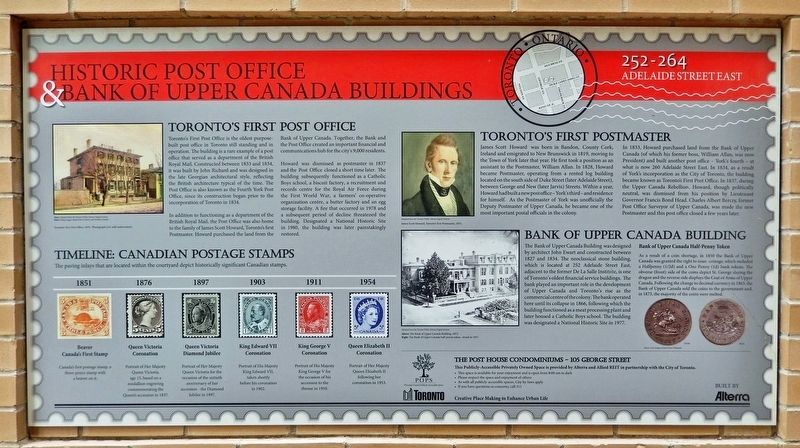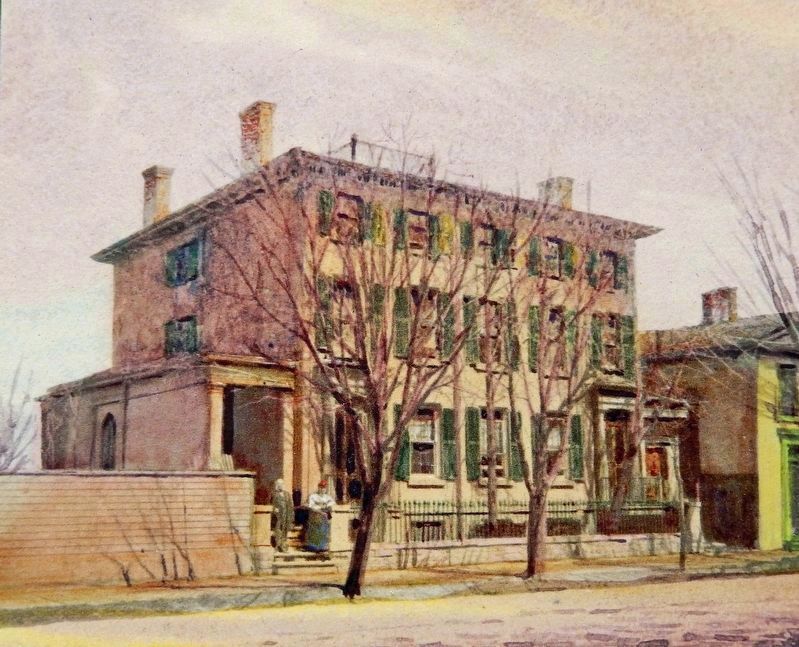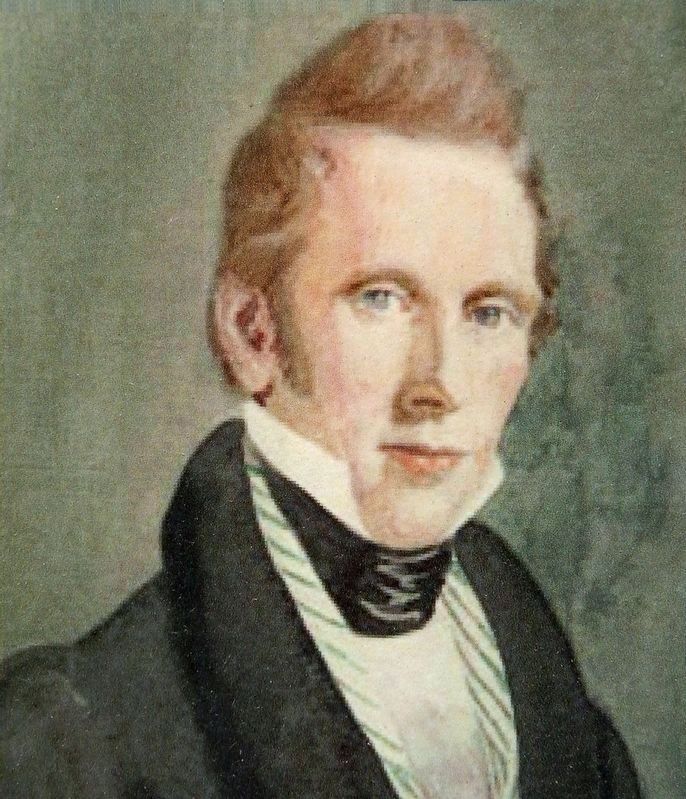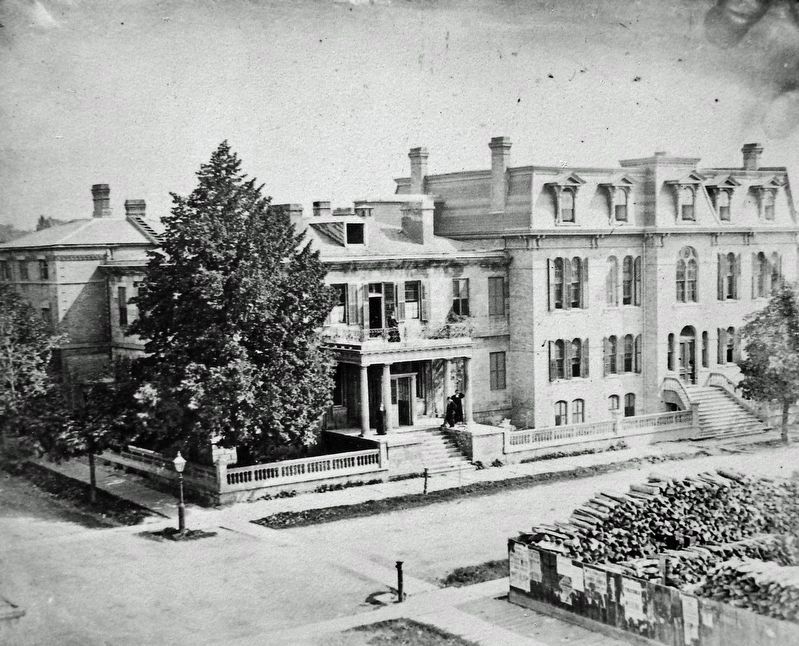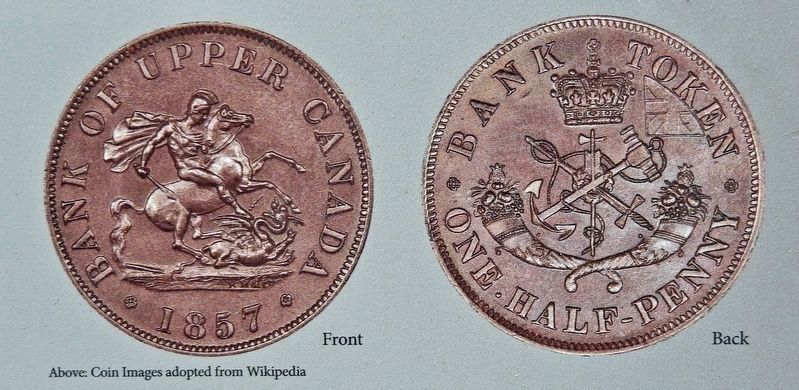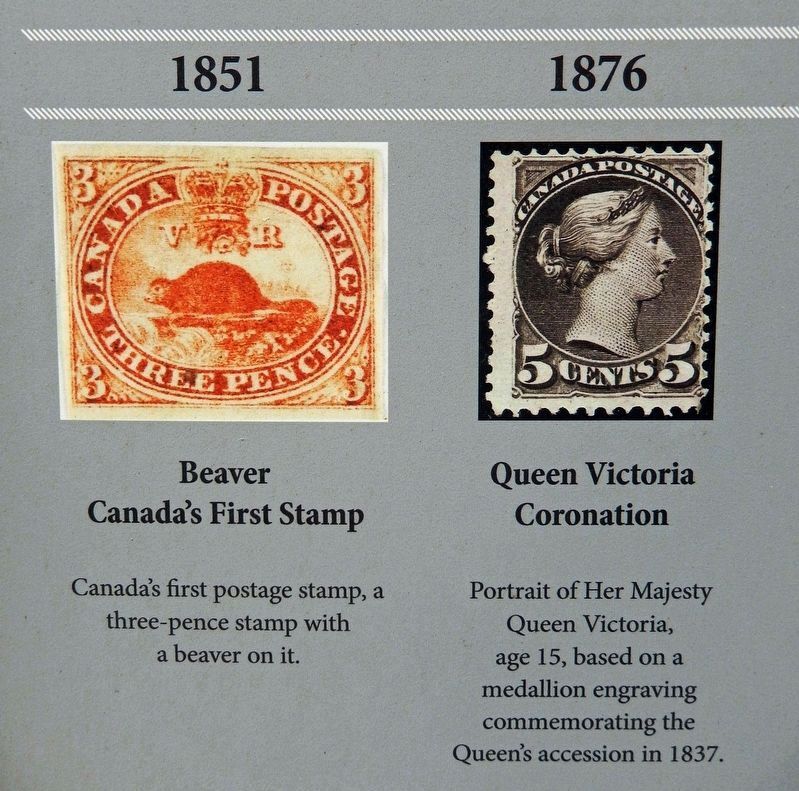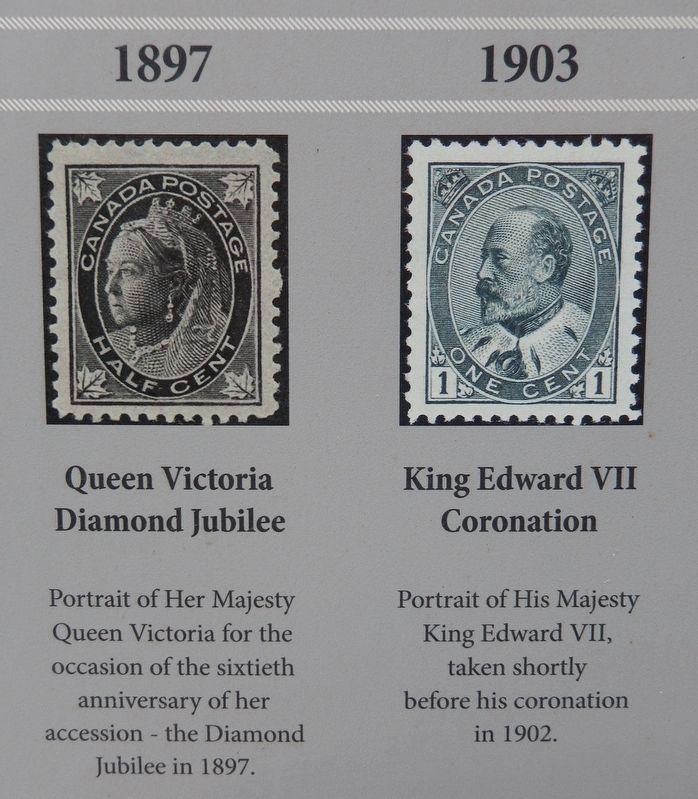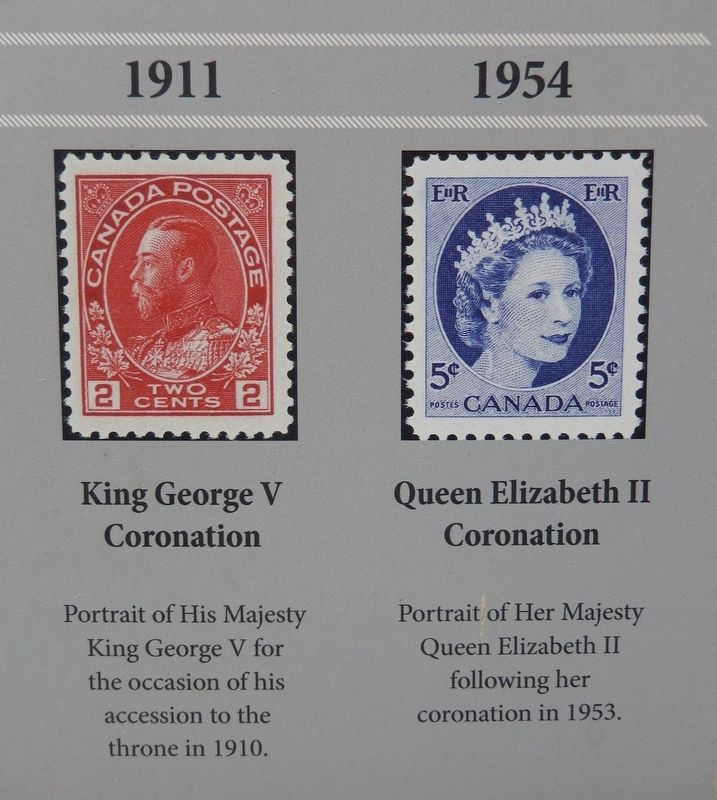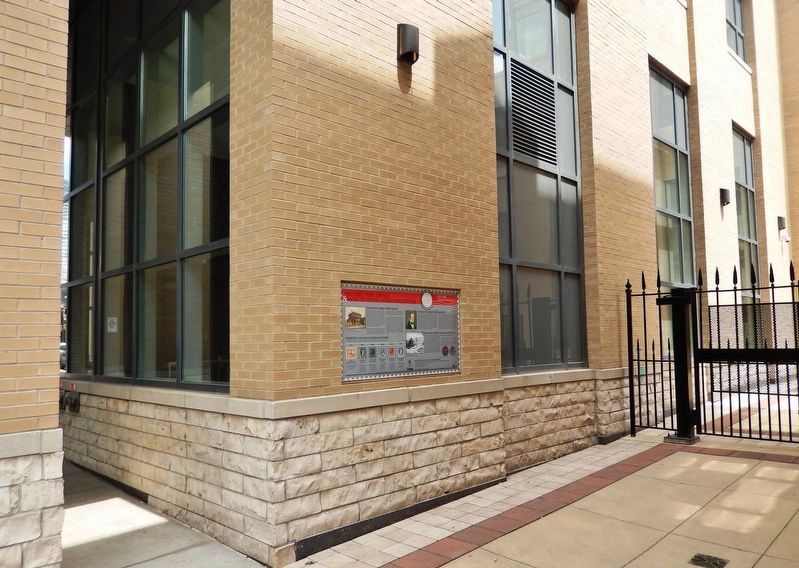Old Town in Toronto, Ontario — Central Canada (North America)
Historic Post Office & Bank of Upper Canada Buildings
252-264 Adelaide Street East
Inscription.
Toronto’s First Post Office
Toronto's First Post Office is the oldest purpose-built post office in Toronto still standing and in operation. The building is a rare example of a post office that served as a department of the British Royal Mail. Constructed between 1833 and 1834, it was built by John Richard and was designed in the late Georgian architectural style, reflecting the British architecture typical of the time. The Post Office is also known as the Fourth York Post Office, since its construction began prior to the incorporation of Toronto in 1834.
In addition to functioning as a department of the British Royal Mail, the Post Office was also home to the family of James Scott Howard, Toronto's first Postmaster. Howard purchased the land from the Bank of Upper Canada. Together, the Bank and the Post Office created an important financial and communications hub for the city's 9,000 residents.
Howard was dismissed as postmaster in 1837 and the Post Office closed a short time later. The building subsequently functioned as a Catholic Boys school, a biscuit factory, a recruitment and records centre for the Royal Air Force during the First World War, a farmers' co-operative organization centre, a butter factory and an egg storage facility. A fire that occurred in 1978 and a subsequent period of decline threatened the building. Designated a National Historic Site in 1980, the building was later painstakingly restored.
Timeline: Canadian Postage Stamps
1851 • Beaver - Canada's First Stamp
Canada's first postage stamp, a three-pence stamp with a beaver on it.
1876 • Queen Victoria Coronation
Portrait of Her Majesty Queen Victoria, age 15, based on a medallion engraving commemorating the Queen's accession in 1837.
1897 • Queen Victoria Diamond Jubilee
Portrait of Her Majesty Queen Victoria for the occasion of the sixtieth anniversary of her accession - the Diamond Jubilee in 1897.
1903 • King Edward VII Coronation
Portrait of His Majesty King Edward VII, taken shortly before his coronation in 1902.
1911 • King George V Coronation
Portrait of His Majesty King George V for the occasion of his accession to the throne in 1910.
1954 • Queen Elizabeth II Coronation
Portrait of Her Majesty Queen Elizabeth II following her coronation in 1953.
Toronto’s First Postmaster
James Scott Howard was born in Bandon, County Cork, Ireland and emigrated to New Brunswick in 1819, moving to the Town of York later that year. He first took a position as an assistant to the Postmaster, William Allan. In 1828, Howard became Postmaster, operating from a rented log
building located on the south side of Duke Street (later Adelaide Street), between George and New (later Jarvis) Streets. Within a year, Howard had built a new post office —York's third — and residence for himself. As the Postmaster of York was unofficially the Deputy Postmaster of Upper Canada, he became one of the most important postal officials in the colony.
In 1833, Howard purchased land from the Bank of Upper Canada (of which his former boss, William Allan, was now President) and built another post office — York's fourth — at what is now 260 Adelaide Street East. In 1834, as a result of York's incorporation as the City of Toronto, the building became known as Toronto's First Post Office. In 1837, during the Upper Canada Rebellion, Howard, though politically neutral, was dismissed from his position by Lieutenant Governor Francis Bond Head. Charles Albert Berczy, former Post Office Surveyor of Upper Canada, was made the new Postmaster and this post office closed a few years later.
Bank of Upper Canada Building
The Bank of Upper Canada Building was designed by architect John Ewart and constructed between 1827 and 1834. The neoclassical stone building, which is located at 252 Adelaide Street East, adjacent to the former De La Salle Institute, is one of Toronto's oldest financial service buildings. The bank played an important role in the development
of Upper Canada and Toronto's rise as the commercial centre of the colony. The bank operated here until its collapse in 1866, following which the building functioned as a meat processing plant and later housed a Catholic Boys school. The building was designated a National Historic Site in 1977.
Bank of Upper Canada Half-Penny Token
As a result of a coin shortage, in 1850 the Bank of Upper Canada was granted the right to issue coinage, which included a Halfpenny (½d) and a One Penny (1d) bank tokens. The obverse (front) side of the coins depict St. George slaying the dragon and the reverse side displays the Coat of Arms of Upper Canada. Following the change to decimal currency in 1863, the Bank of Upper Canada sold the coins to the government and, in 1873, the majority of the coins were melted.
Erected by The Post House Condominiums.
Topics and series. This historical marker is listed in these topic lists: Architecture • Communications • Industry & Commerce. In addition, it is included in the Postal Mail and Philately series list. A significant historical year for this entry is 1833.
Location. 43° 39.126′ N, 79° 22.266′ W. Marker is in Toronto, Ontario. It is in Old Town. Marker is on George Street just north of Adelaide Street East, on the right when traveling north. Marker is mounted at eye-level near the southwest corner of the building at this address. Touch for map. Marker is at or near this postal address: 105 George Street, Toronto ON M5A 0L4, Canada. Touch for directions.
Other nearby markers. At least 8 other markers are within walking distance of this marker. Addition to the Bank of Upper Canada (a few steps from this marker); The Bank of Upper Canada Building / L'édifice de la Banque du Haut-Canada (within shouting distance of this marker); De La Salle Institute Building (within shouting distance of this marker); York Post Office / Le Bureau de Poste de York (within shouting distance of this marker); George Brown College (within shouting distance of this marker); 61-75 Jarvis Street (about 150 meters away, measured in a direct line); Francis Collins (about 150 meters away); The Daniel Brooke Building (about 180 meters away). Touch for a list and map of all markers in Toronto.
Related markers. Click here for a list of markers that are related to this marker.
Credits. This page was last revised on March 9, 2023. It was originally submitted on March 8, 2023, by Cosmos Mariner of Cape Canaveral, Florida. This page has been viewed 108 times since then and 34 times this year. Photos: 1, 2, 3, 4, 5, 6, 7, 8, 9. submitted on March 9, 2023, by Cosmos Mariner of Cape Canaveral, Florida.
